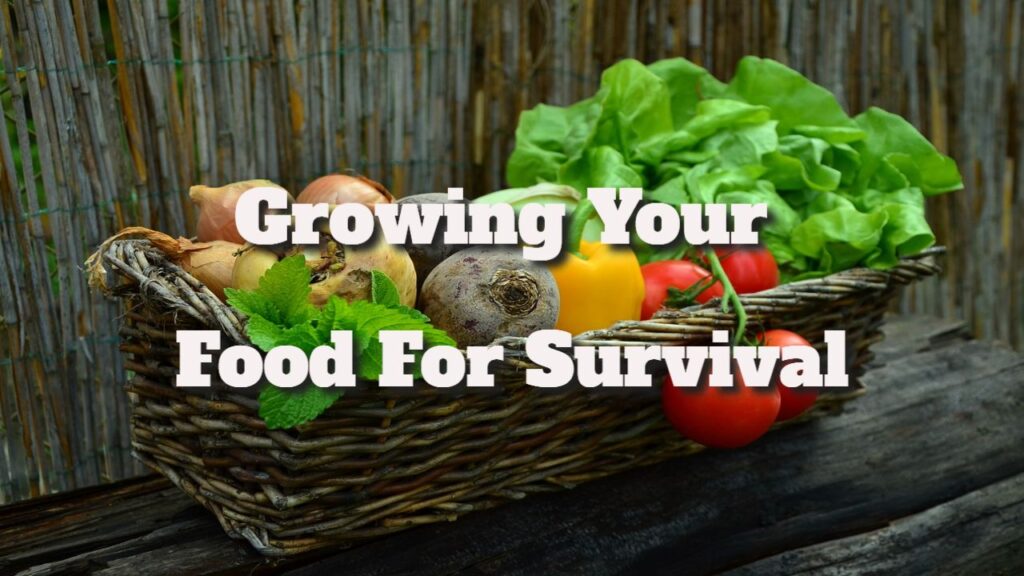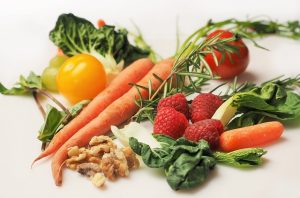Essential Strategies for Growing Your Own Survival Food
In today’s world, the importance of growing survival food has gained considerable traction. With an increase in natural disasters, global health crises, and economic instability, many individuals and families are embracing a lifestyle of self-sufficiency. This shift towards self-reliance not only provides peace of mind but also empowers people to take control of their food sources during uncertain times. By cultivating your own food, you ensure access to fresh, organic produce, which becomes particularly crucial in times of distress or crisis.
Producing your own food offers a unique advantage—consistent access to fresh and nutritious produce that can support your family’s health. This practice is not only beneficial during emergencies but can also enhance your overall diet. Homegrown fruits and vegetables are often more flavorful and nutrient-rich compared to store-bought alternatives, contributing to better health outcomes for you and your loved ones.
A significant advantage of cultivating your own food is the ability to have complete control over what you consume. You can choose to grow organic produce free from harmful pesticides and chemicals, which can often be found in commercial farming. This not only ensures that you and your family enjoy healthy meals but also minimizes exposure to toxins that can adversely affect health.
Additionally, growing your own food can lead to substantial cost savings over time. By reducing dependency on grocery stores for produce, you can save money, especially when buying high-quality organic items. This transformation not only empowers your wallet but also promotes a sustainable lifestyle that can be maintained long-term.
Regardless of whether you have a spacious backyard or a small balcony, there are numerous methods to cultivate your own fruits and vegetables. Options range from traditional garden plots to container gardening and even innovative hydroponic systems. Each approach can be tailored to fit your available space and budget, ensuring everyone has the opportunity to grow their own food.
Learning how to grow food effectively equips you and your family to handle a variety of situations, providing confidence and security in your ability to source sustenance during unexpected events.

Master the Fundamentals of Growing Your Own Food
Selecting the Ideal Plants for Your Garden
When embarking on your journey to grow food, selecting the right plants is essential for success. It’s crucial to choose varieties that are well-suited to your local climate, soil conditions, and personal gardening experience. Opt for plants that are not only easy to grow but also yield a good harvest.
Popular choices for novice gardeners include crops like tomatoes, lettuce, beans, and peas. These plants are known for their resilience and ability to produce a significant amount of food with relatively low maintenance requirements. By starting with these beginner-friendly crops, you’ll build confidence and gain valuable gardening skills.
Preparing and Maintaining Healthy Soil for Optimal Growth
The success of your plants is directly linked to the quality of the soil in which they are grown. It’s essential to prepare your soil properly before planting by removing any weeds and debris, then enriching it with organic materials such as compost or fertilizer. This process not only improves soil structure and fertility but also provides essential nutrients that promote plant growth.
To maintain optimal soil health throughout the growing season, regularly amend the soil with additional compost or organic matter. Monitoring the soil’s pH levels is also crucial, as it affects nutrient availability. Keeping your soil in top condition will lead to stronger, healthier plants and ultimately a more bountiful harvest.
Effective Watering Strategies for Thriving Plants
Proper watering is vital for the health and growth of your plants. Both overwatering and underwatering can lead to serious issues, such as waterlogging that causes root rot or drought stress that can lead to wilting or death. Striking a balance is key, and establishing a consistent watering routine is essential for thriving plants.
A general guideline is to water thoroughly once or twice a week, but this may vary based on weather conditions and soil type. Implementing mulching techniques can significantly help retain soil moisture, reducing the frequency of watering needed. By mastering watering techniques, you can ensure your plants receive the hydration they need to flourish.
By grasping the fundamentals of food cultivation, you can successfully establish a garden that yields fresh, nutritious food for your household. With the right plant selections, diligent soil preparation, and appropriate watering practices, you’ll enjoy the rewarding experience of growing your own food.
Designing and Setting Up Your Garden for Success
Creating an Efficient Garden Design and Layout
As you embark on the garden design process, consider the unique characteristics of your space and the amount of sunlight your plants will receive. Select a location that receives at least six hours of direct sunlight daily, as this is critical for most plants. Additionally, evaluate the soil type and drainage capabilities of your chosen area.
Plan your garden layout based on the available space and the types of plants you wish to grow. It’s essential to consider the mature size of each plant to ensure they have adequate room to thrive without overcrowding. Utilizing a landscape planner or garden design tool can greatly assist in optimizing your garden design.
Incorporating complementary planting techniques can enhance the health and productivity of your garden. For example, planting marigolds near tomatoes can naturally deter pests that are attracted to these plants. This strategic approach not only protects your crops but also reduces the need for chemical pest control methods.
When designing your garden, take the time to research which plants are compatible with one another. Understanding plant relationships can significantly improve overall garden health and yield, making your gardening journey more rewarding while minimizing pest issues.
Implementing Effective Pest Control Techniques
Pest management plays a crucial role in successful gardening. A variety of methods can be employed to manage pests, including introducing natural predators like ladybugs and utilizing organic insecticides. Understanding the specific pests that inhabit your garden can help you choose the most effective solutions for your situation.
Be cautious when using any pest control products; always adhere to the recommended application rates to prevent harm to your plants and the surrounding environment. By following best practices in pest management, you can cultivate a thriving garden that yields a plentiful supply of food while minimizing your reliance on harmful chemicals.
Harvesting and Storing Your Homegrown Produce
Expert Techniques for Harvesting Your Crops
When the time comes to harvest your produce, following specific techniques can help ensure your plants continue to thrive. For root crops like carrots and potatoes, begin by carefully loosening the soil around the plant with a garden fork before gently lifting them from the ground.
For leafy greens, such as lettuce and spinach, use a sharp knife or scissors to cleanly cut the leaves at their base. When harvesting fruits like tomatoes or strawberries, gently twist or cut them from the stem to avoid damaging the plant. Implementing these techniques will help maintain the health of your plants while allowing you to enjoy fresh produce.
Preserving Your Harvest for Long-Term Storage
Proper storage of your harvested produce is essential to ensure its long-term viability and freshness. One of the most accessible methods for preserving food is canning. This process involves heating food in jars to eliminate bacteria and sealing them to prevent new bacteria from entering.
Another effective preservation method is drying, which removes moisture from food to extend its shelf life. You can achieve this by hanging food to dry naturally or using a dehydrator for a more controlled approach. Lastly, freezing is an excellent way to retain the quality of your food for extended periods. Simply wash, cut, and store your produce in appropriate containers or bags before placing them in the freezer.
Proper Methods for Seed Preservation and Storage
To ensure you can grow food in future seasons, it’s vital to properly conserve and store your seeds. Start by thoroughly drying the seeds before storage; this can be achieved by spreading them out flat and allowing them to air dry for several days. Once dried, place them in a sealed container and store them in a cool, dry location.
Be sure to label each container with the seed variety and the date of harvest. This practice will help you track your seeds and ensure their viability for upcoming planting seasons. By following these steps, you can cultivate a sustainable source of food for your family well into the future.
The post Essential Strategies for Growing Your Own Survival Food appeared first on Survival Avenue.
The Article Essential Strategies for Growing Your Own Survival Food was found on https://limitsofstrategy.com


